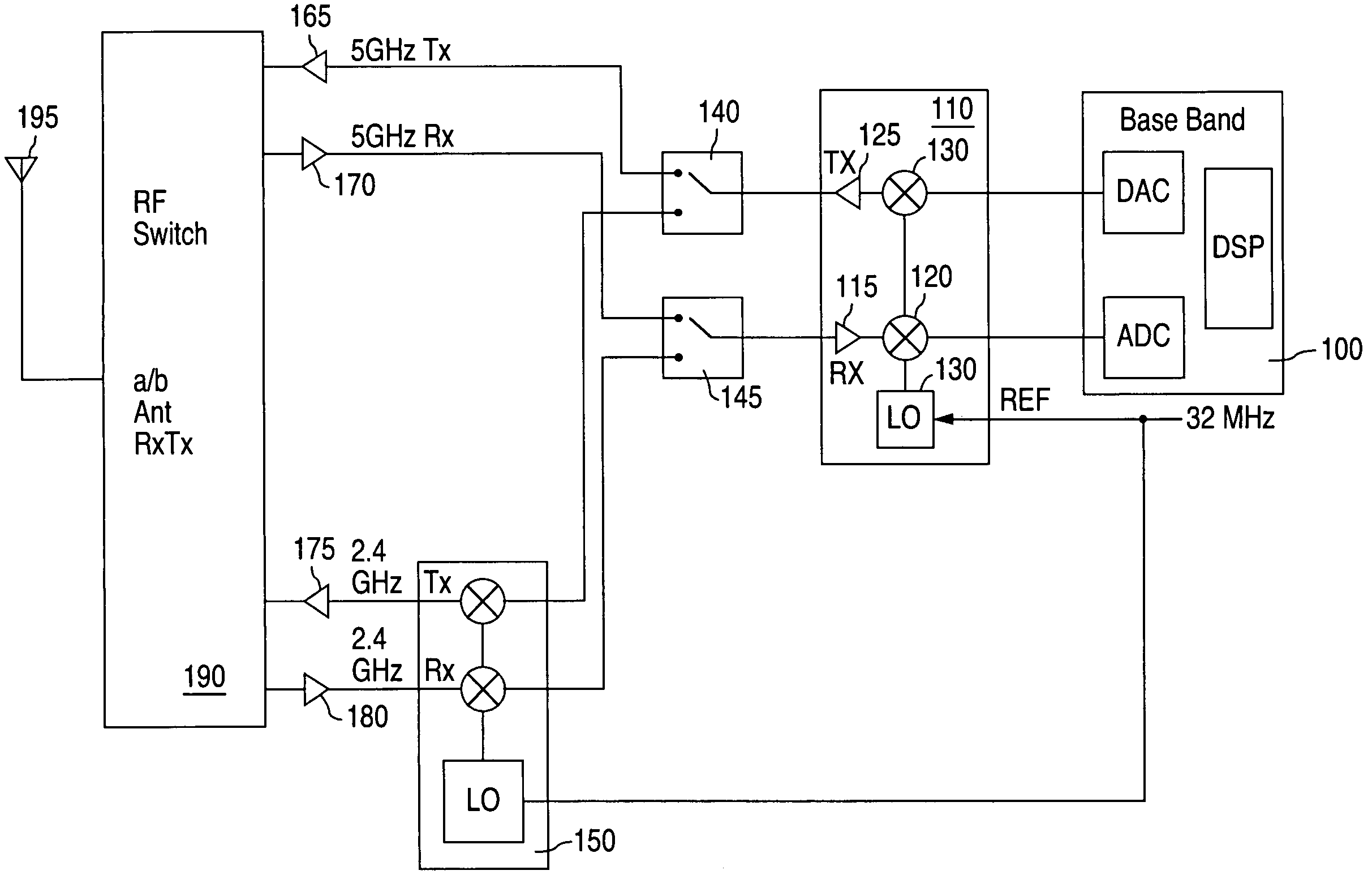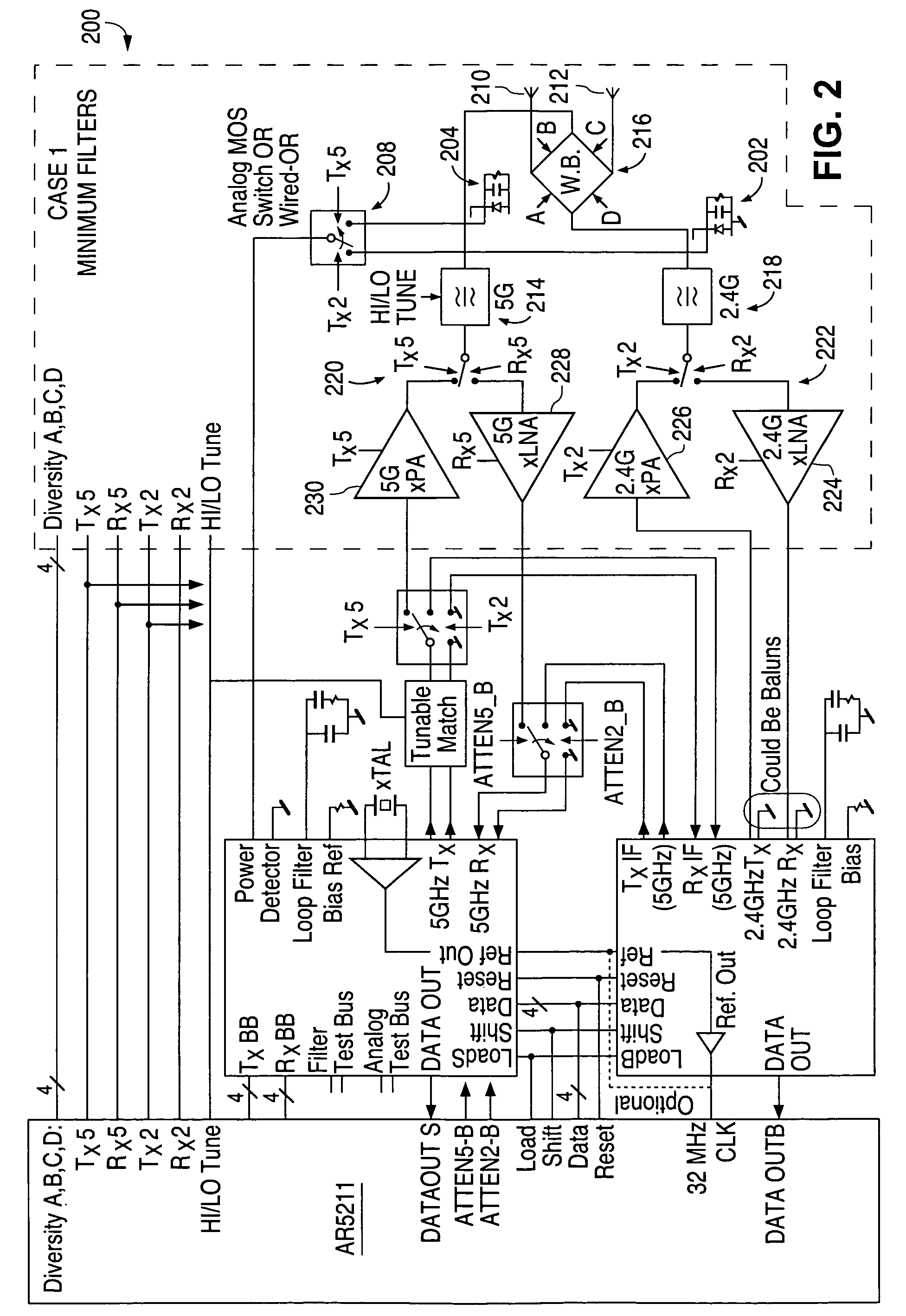Dual frequency band wireless LAN
a dual-band wireless and lan technology, applied in the field of dual-band wireless lan devices, can solve the problems of increasing the size and cost of the solution, slow and expensive development of the chipset, and achieve the effect of cost saving and low cos
- Summary
- Abstract
- Description
- Claims
- Application Information
AI Technical Summary
Benefits of technology
Problems solved by technology
Method used
Image
Examples
Embodiment Construction
[0024]Referring now to the drawings, wherein like reference numerals designate identical or corresponding parts, and more particularly to FIG. 1 thereof, there is illustrated a top level block diagram of a dual band transceiver according to an embodiment of the present invention. A base band processor 100 processes signals that are to be broadcast and signals that are received. A first RF device 110 converts signals that are to be broadcast to a first RF frequency band. In a preferred embodiment, the first RF frequency band is the 5 GHz frequency band, and the first RF device 110 is a radio on a chip (e.g., the AR5111 chip from Atheros Communications, Inc., assignee of the present invention). However, other 5 GHz (or other first RF frequency) chip sets or discrete components may be utilized.
[0025]Switch 140 routes the first RF frequency band signals to RF circuitry including PA 165, switches (e.g. 11a / 11b (also called “a / b” herein) antenna switch, and RxTx switch) 190, and on-chip f...
PUM
 Login to View More
Login to View More Abstract
Description
Claims
Application Information
 Login to View More
Login to View More - R&D
- Intellectual Property
- Life Sciences
- Materials
- Tech Scout
- Unparalleled Data Quality
- Higher Quality Content
- 60% Fewer Hallucinations
Browse by: Latest US Patents, China's latest patents, Technical Efficacy Thesaurus, Application Domain, Technology Topic, Popular Technical Reports.
© 2025 PatSnap. All rights reserved.Legal|Privacy policy|Modern Slavery Act Transparency Statement|Sitemap|About US| Contact US: help@patsnap.com



